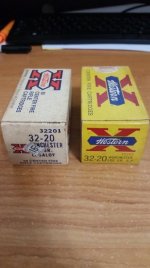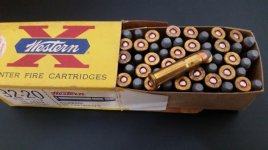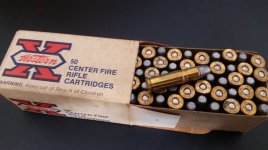Decades ago the major ammo makers (Western, Winchester, Remington, Union Metallic Cartridge, Dominion, and others) usually marked boxes with the type of firearms for which the ammo was intended, such as Colt Revolvers, Winchester rifles, Marlin rifles, etc. This was done for several reasons:
1. Some calibers were offered in both rifles and revolvers, with differing powder charges according to intended use.
2. Some older firearms remained in use despite relatively weak actions, as compared to later developments (example: Winchester 1873 vs. Winchester 1892, Marlin 1894, etc).
3. Bore and groove diameters, as well as rifling methods, varied widely between manufacturers (example: Colt .44-40 revolvers with .426-.427" groove diameters vs. Winchester & Marlin rifles in .44-40 with .429-.431" groove diameters).
Since about WW2 there has been a largely successful effort to standardize, with the SAAMI (Sporting Arms & Ammunition Manufacturers Institute) standards becoming the norm. More modern ammunition is produced so as to be safe for use in any modern firearm in good mechanical condition, although it may not be optimal for any particular firearm. Those of us who use vintage firearms have come to understand that reloading ammo tailored specifically for those guns is the best way to fully enjoy their capabilities.
The Winchester Super X box shown in the OP's photo is of relatively recent production (probably 1980's to 1990's). The Remington yellow box is typical of 1960's to 1980 or so production, both well after SAAMI standardization. Assuming that the ammo contained is original factory production, shows no signs of damage or severe corrosion, and has been properly stored, it should be safe for use in any modern firearm in good mechanical condition.





